Tractrix Paper Mache Horn by Inlow Sound
![[Paper horn]](../jpg/horn_closeup.jpg)
[ Home | Staff & Contacts | HiFi Playground | Listening tests | DIY & Tweakings | Music & Books ]
Product name: Inlow 190 Hz Tractrix Paper Mache Horn
Manufacturer: Inlow Sound - USA
Cost: $1000 per pair (Currency conversion)
Reviewer: Rahul Athalye - TNT USA
Reviewed: April 2013
![[VOTT from Altec brochure]](../jpg/altec_vott.jpg)
There was a very interesting thread on diyaudio.com about pro versus hi-fi speakers. The argument was that pro drivers were engineered for high performance and would perform better than hi-fi drivers in the home environment, where they are unlikely to even break a sweat. One poster threw out an invitation to compare his all pro-system with a pair of Von Schweikerts. Knowing that he lived closed to where I did, I took him up on the offer. Now, his all pro system turned out to be a big Altec A5 rig (or A7, I forget), something the audiophile world is not too unfamiliar with. Altec's Voice of the Theatre (VOTT) systems are quite popular around the world.
Originally designed for movie theatres, the VOTTs use a 15" woofer mounted behind a large front horn. High frequencies are handled by a multicell horn with a compression driver. The VOTT system I was about to listen to was highly modified: braced and right-sized cabinets, new crossovers, and a supertweeter to cover the frequencies above 6 kHz. When I sat down to listen, I was expecting a loud, harsh sound. Instead, the VOTTs greeted me with a mellow, rounded, smooth, grain-free sound. They weren't the most neutral or widest bandwidth speakers. There was no earth-shaking bass or hyper-detailed highs. But the walls had melted and every recording took me somewhere else. Power, dynamics, and unbelievable realism. It sounded more like the real thing than I had ever heard before.
I'm a Led Zeppelin fan (you're not alone, Geoff!) and they sounded magnificent on this system. The wall of sound that Zeppelin can create must be heard loud. “In my time of dying" from Physical Graffiti is one of my favorite Zeppelin songs. Bonham's drumming is like a juggernaut. I can enjoy this song through the car radio, but through the VOTTs, I could actually understand what they were trying to do. It was like listening to the Gods live!
The Paper Horn
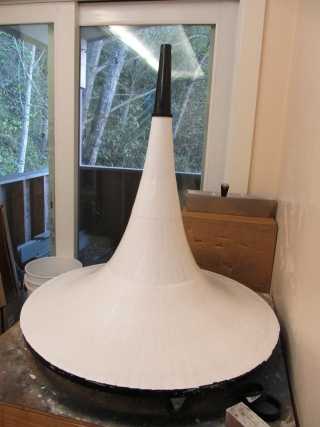 After coming away from the VOTT experience, the chase was on – to get my own all horn system. On a random internet stroll, I found John Inlow's website. Horns out of paper mache - what an intriguing idea. I shot him an email and we began chatting. He invited me over for a listen and said I could build my own pair if I put in the time. And I did.
After coming away from the VOTT experience, the chase was on – to get my own all horn system. On a random internet stroll, I found John Inlow's website. Horns out of paper mache - what an intriguing idea. I shot him an email and we began chatting. He invited me over for a listen and said I could build my own pair if I put in the time. And I did.
The paper mache horns are made out of… paper. John chose paper because it is a material with good intrinsic damping and it gives a pleasing sound. The paper mache technique works with any paper, even newspaper paper. John's weapon of choice is cotton paper; nothing exotic – it is readily available at your neighborhood stationary store. You start building the horn by cutting A4 sheets of cotton paper into one inch strips. The strips are wetted in water and laid on a mould, which is the negative of the tractrix profile. The horn needs about 12 layers of paper, and lots of glue (regular white glue is fine) to hold the layers together. Once it dries, it can be lifted off the mould. The full procedure is a lot more involved and you can read it here at Inlow Sound. All I can say is that it is a very time-consuming process. Each horn can take up to 24 hours to put together.
John has designed an elegant wooden perch for the horn. The perch does two things: first, it allows the horn to be mated to a compression driver (CD); second, it creates a structure for the horn/CD combo that can make the horn sit up straight. The weight of the horn balances the weight of the extremely heavy driver (25 lbs!).
Selecting a Compression Driver
The horns can be customized to match any exit size. I went for the large format compression drivers. There are many new large format drivers available from Radian, B&C, BMS, Faital Pro and other pro manufacturers. Then there are second hand drivers, such as JBL 2445s and 2446s, which are cheaper. New, they cost about $800 per driver. But used ones in good to great condition go for about $400/pair on ebay. The JBLs are built like a tank, and unlike cone drivers, compression drivers do not degrade with age.
Large format drivers have lower distortion in the critical midrange compared to their smaller 1" counterparts (JBL paper). However, and despite the claims from JBL, the large format drivers simply don't have the extension and dispersion in the high frequencies of the smaller diaphragm (one inch exit) drivers. The upshot is that large format drivers have extraordinary clarity in the midrange, lower distortion, dispersion control at 500 Hz and that elusive perception of greater dynamics.
Measurements
Figure 1 shows the raw and 1/12th octave-smoothed (offset for clarity), un-equalized on-axis response of the driver and paper mache horn combination. The horn reaches down to 400 Hz, as it should, being a 190 Hz tractrix horn. It lies within superb +-2.5db limits from 500 Hz all the way up to 7 kHz. The response rolls off smoothly below 400 Hz and above 10 kHz. With a little shelving, the response can be extended to 15 kHz. The driver though is breaking up above 7 kHz as is visible in the raw response.
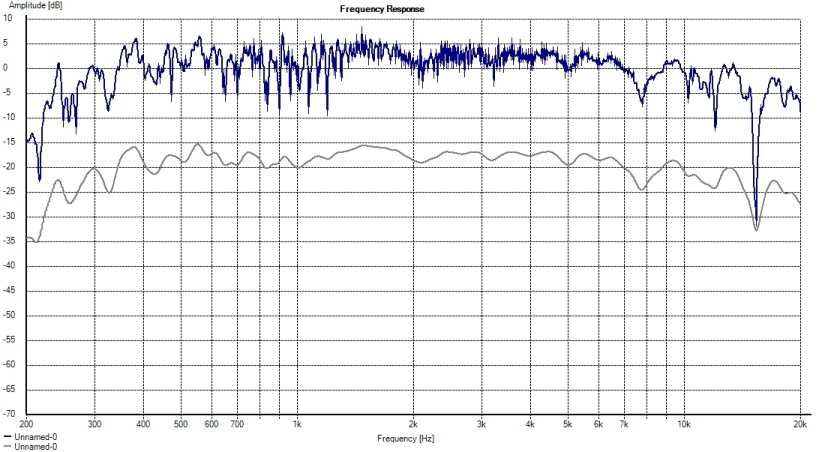
Figure 2 shows the off-axis response normalized with the on-axis response, i.e., at every angle the graph shows the change in response compared to the on-axis response. There is some ripple evident near the 1 kHz region, where the off-axis doesn't follow the on-axis response. It could also be my measurement technique because it was hard to measure such a large device. I tried rotating the horn/driver combo about different points - the driver, the front of the horn and the perch front. The general trend did not show significant changes in these different measurements.
The horn becomes very directional in the high frequencies. In fact, even at 2 kHz, the beamwidth is only 30°. Some directivity is a good thing because it lowers early reflections, increases the direct to reflected ratio, which increases clarity. However, the horn becomes too directional in the HF, which results in very little reflections. This is somewhat expected given the size of the horn. The perceptual result of the narrow dispersion is that the phantom image forms in front of the speakers rather than behind them.
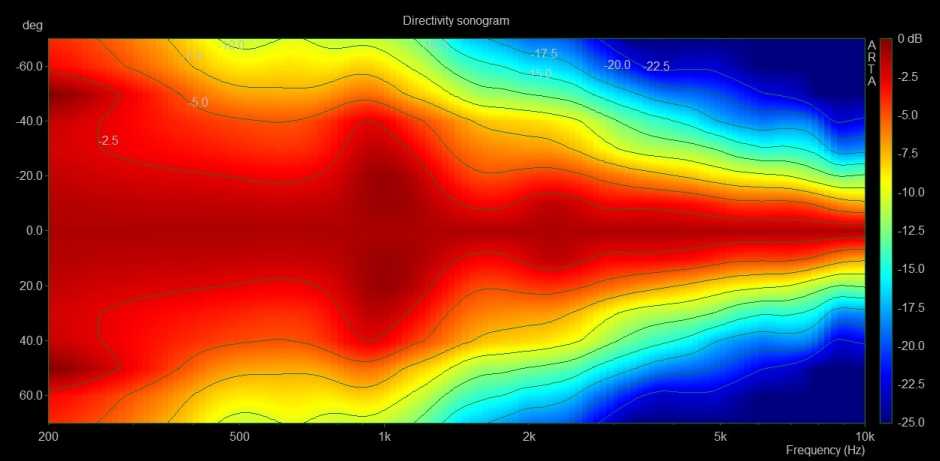
The next group of figures show the distortion of the paper mache horn compared to a B&W DM602 S3 at different SPLs. The measurements were made outdoors using STEPS. I chose to compare the distortion of the horn with the B&W because it represents a typical two-way speaker. It has a smooth and flat response, and as the distortion graphs will show, it acquits itself quite well against the horns. The horn does not have much output below 200 Hz and 200 Hz is also almost outside the operating range of the CD. The lower limit of the graph is therefore restricted to 200 Hz. The upper limit of the graph is 10,000 Hz.
Figure 3 shows the THD of the two speakers at 90db, 2m away. There is not much to pick between the two speakers. One should not read too much into THD numbers. Research has shown that there is poor correlation between THD and audibility.
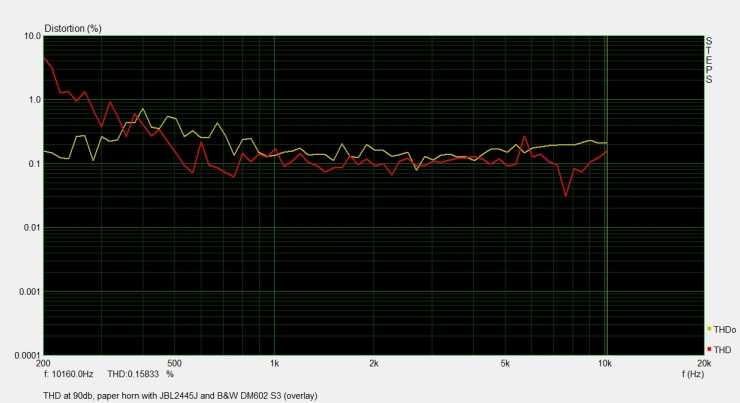
Figure 4 shows the same comparison at 100db. The distortion level is higher compared to the level at 90db and this is expected. Again, there is little difference between the two speakers. Now, 100db is very loud. Hearing will be damaged if you listen at this level for long periods. If we assume an average SPL of 75dbC, a good recording with 20db headroom will require 95dbC peaks from the speaker at the listening position. My listening position is more than 2m away, and so, 100db peaks are not unreasonable.
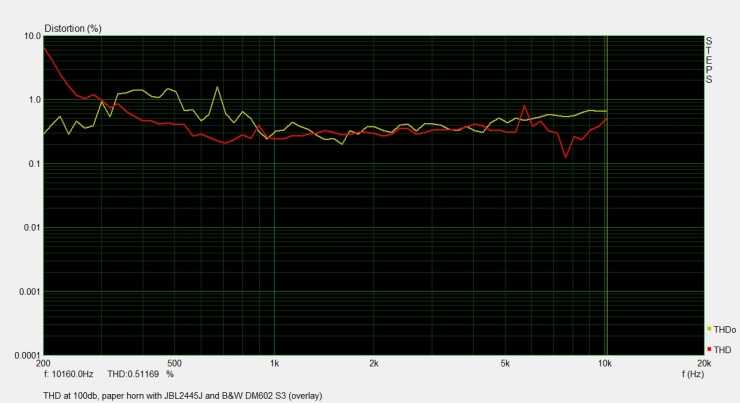
Figure 5 compares the 3rd harmonic for the two speakers at 100db. Here we start seeing some difference between the two speakers. The 3rd HD of the horn keeps falling with increasing frequency, but that of the B&W remains at a constant level. I haven't bought into the idea that this difference is audible. See next figure.
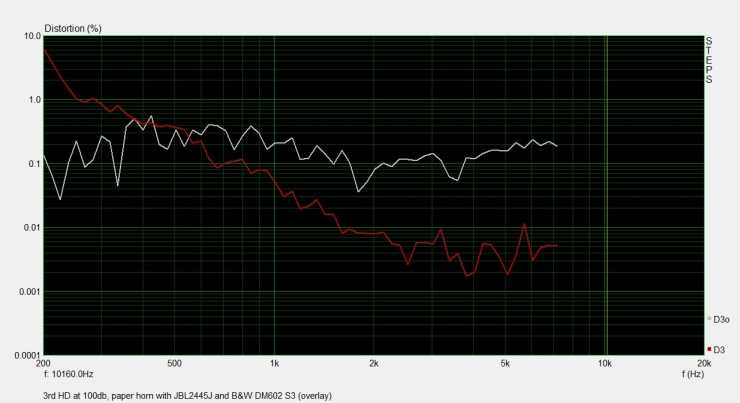
Figure 6 shows the combined 6th to 12th harmonics for the two speakers at 100db/2m. This is a more important comparison than the 3rd HD because the higher harmonics cannot be masked by the fundamental like the lower orders are. Therefore, the higher harmonic distortion is more audible and correlates well with perception. What we see in the graph though, is that the levels are about the same.
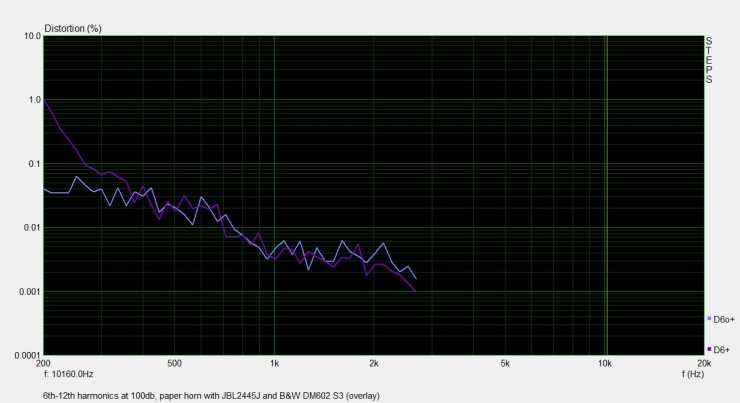
The distortion results were inconclusive in explaining the sound of the horns. They did not point towards a reason why the horns sound so dynamic compared to the B&W. There are other hypothesis, which relate to the direct versus reflected ratio that is greatly increased by the directivity of the horn, and this results in improved clarity or the perception of greater dynamics. I was not able to fully investigate this hypothesis.
CrossoverWhen I got the horns home for the first time, all I wanted to do was play music. But these babies are not exactly plug-n-play. I spent almost a year working out the crossover before I was satified. Crossing to a baffle-mounted woofer must compensate for the delay introduced by the depth of the horn. A digital crossover, such as the MiniDSP, makes adding a delay very easy. What worked for me is a 3rd order butterworth filter on the woofer at 350 Hz and a 2nd order Linkwitz-Riley on the horn at 800 Hz. This results in an electrical 4th order crossover at about 650 Hz. This keeps the horn out of the high distortion below 500 Hz. The crossover changes the acoustic centers of the woofer and the 2445 CD, and the delay needed on the woofer after the crossover is only about 0.4 ms.
The digital crossover allows adjusting the gain to compensate for different amplifier and driver sensitivities. The horns are very sensitive (about 110db/2.83V/1m), and act like a magnifying glass for noise. So, the amplifier and the entire chain has to be noise-free. The FirstWatt M2 is pretty spectacular in this regard. Even with my ears near the horn, it is dead quiet. The MiniDSP is not so quiet though. It introduces an annoying buzz, which does become inaudible during music.
Sound (a.k.a. The Magic of Horns)
I grew up listening to a staple of 85-90 db/W bookshelf or tower speakers. And until I heard the VOTT system, I was blissfully unaware of how much (perceived) distortion I was listening to. A classic example is ‘Time' on Dark Side of the Moon. I used to think that creating noise and a wall of sound is what they intended. It was supposed to sound distorted and noisy. That, was cool.
Now, on the horns, it suddenly makes sense. It's not noise at all. Hey, there's a guitar, and some drums. You don't have to cringe and wait for the loud part to be over. You can actually follow individual instruments through high power crescendos. And then, during soft passages, it seems softer and yet there is no loss of clarity. And then there is the midrange. Absolutely to die for. It has a seductive, luscious quality that is very smooth and alluring. Voices have a palpable presence. Turn up the volume and it just keeps getting bigger and bigger. The only problem is setting the volume too loud. You can easily be listening at dangerous levels without realizing it.
A system's dynamic capability is a highly underrated quality. It is also something that is hard to quantify through measurements. But these horns have it in abundance.
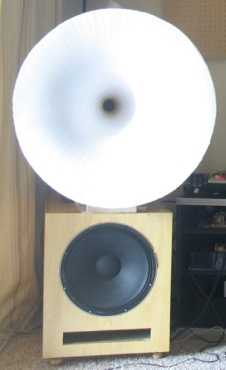
I compared the horns to a pair of B&W DM602 S3s as well as the highly regarded KEF Q900s. These personify typical bookshelf and tower loudspeakers available in the market today. These are not speakers at the top of their lines, nor are they in the same price bracket as the paper horn plus compression driver combo, but still they serve as a good reference point for comparison. Nearly everyone has heard these or similar speakers.
Both these speakers now sound like toy systems – small, distorted, lifeless, and a pale impression of the music that the horns are able to convey so effortlessly. The soundstage and instrument sizes seem so incorrect that it makes me exclaim, “Oh! What was I listening to?!"
I also have a pair of SEOS-12 waveguides on hand. Now, the SEOS-12 is a totally different animal compared to the paper horns. These waveguides are designed to optimize the off-axis response. Efficiency is sacrificed to improve off-axis performance. They are still over 100 db/2.83V/1m though. They are much smaller and can only be used above 1 kHz. With constant off axis response all the way to 90°, these waveguides result in superb imaging. They don't quite have the dynamics of the paper horn, but I do feel more relaxed when listening to them compared to the horn. That said, the horn still retains that alluring, smooth midrange, which some might say is a worthy trade-off against perfect imaging.
Once you hear the paper horns, direct radiators just sound wrong. Sheer dynamics, clarity, purity and closeness to the music are qualities that the paper horns bring in spades.
I'm so glad that I met John and discovered his wonderful horns. He is a very interesting guy and I've learned much from him. He has such novel ideas, like building horns out of paper mache. The horns are not only functional, they also have an extremely high WAF despite their size. My wife loves them. They are big and yet delicate, intricate. One of our friends said that she wouldn't mind putting them in her living room as art — they don't even have to make any sound.
The size of the horn makes the crossover difficult, but not impossible. And the size also makes the horn very directional above 2 kHz. A tweeter can solve this problem, but integrating it with the large horn is difficult because of the center-to-center spacing. As with any design, there are compromises. Here, it is a compromise between a glorious midrange and imaging.
But if you are really interested in music, if you want to know what instruments really sounds like, or a voice, if you want to hear Led Zepp live, if you like clarity and dynamics, or if you want a speaker that doubles up as a sculpture, get some paper horns. It might be the last speaker you buy!
© Copyright 2013 Rahul Athalye - rahul@tnt-audio.com - www.tnt-audio.com
[ Home | Staff & Contacts | HiFi Playground | Listening tests | DIY & Tweakings | Music & Books ]